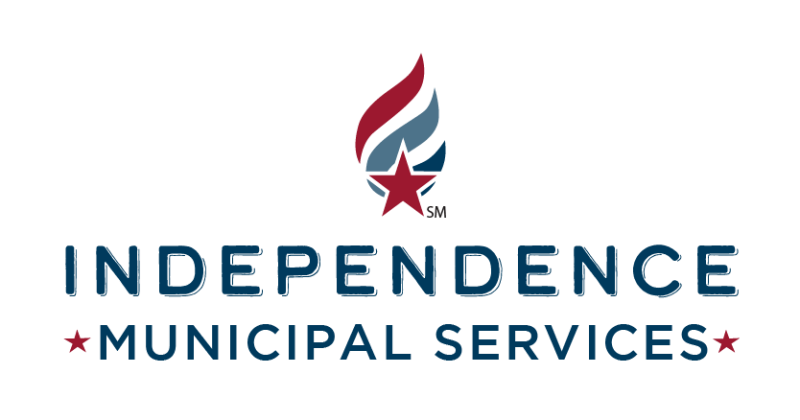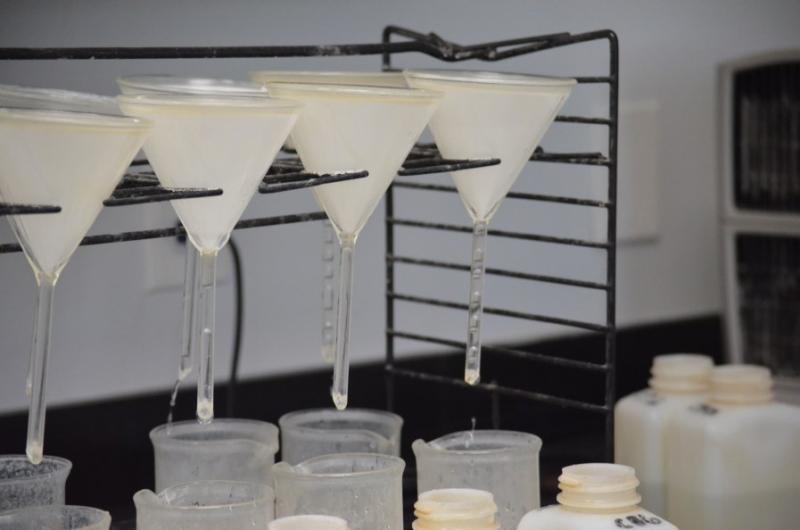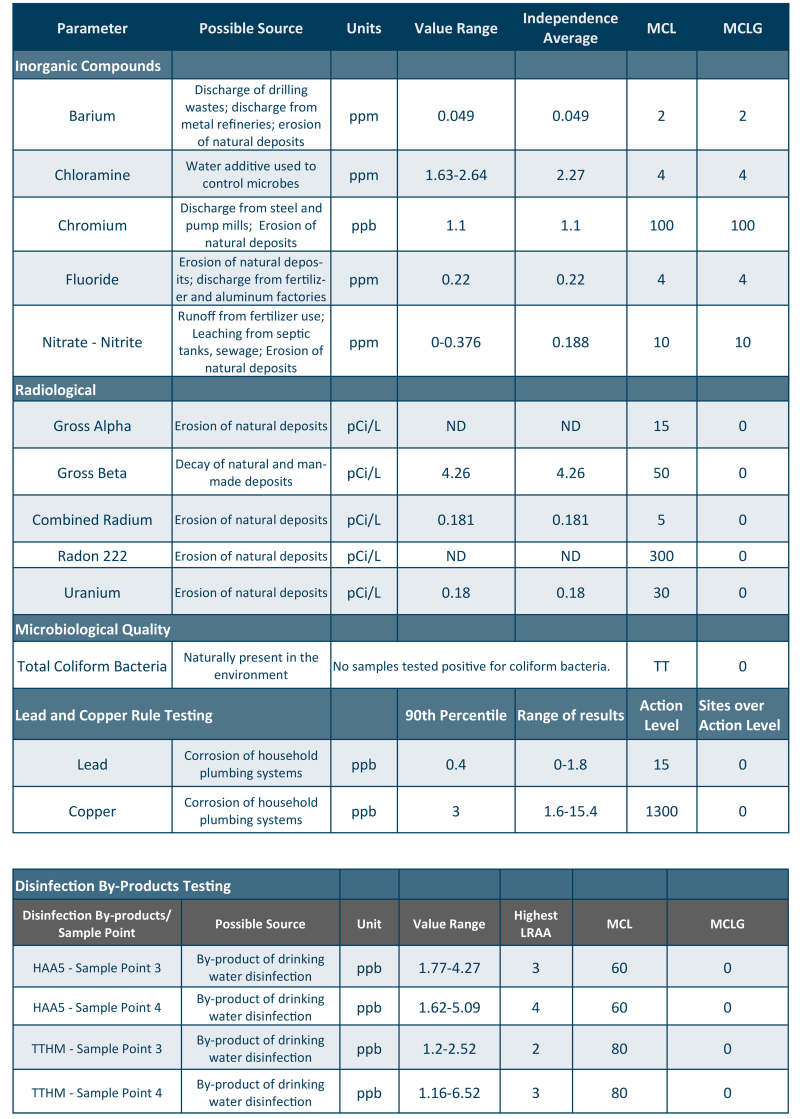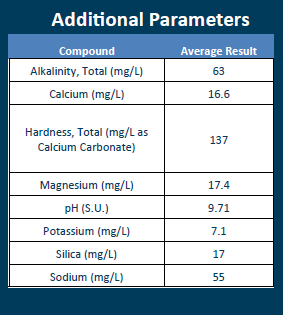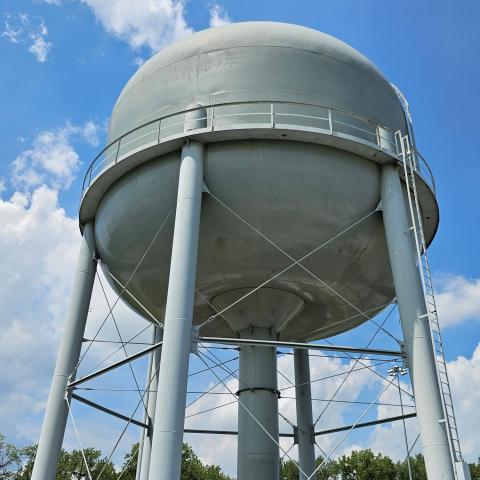2023 Consumer Confidence Report
We are pleased to present to you this year’s Annual Drinking Water Quality Report. Our water comes from 44 wells that pump water from the Missouri River alluvial aquifer. Today, the Courtney Bend Water Plant has the capability of supplying a maximum of 48 million gallons of water per day. We supply water to approximately 250,000 people including residents of Independence and 12 wholesale customers.
Our water consistently meets or exceeds all federal and State of Missouri drinking water regulations. In 2023, our water was recognized as the best tastng water in the state of Missouri by the Missouri Section of the American Water Works Association. This qualified us to compete in the Best of the Best water tastng competiton which was held at the internatonal gathering of drinking water professionals in Toronto, Canada.
In addition to operating and maintaining the water treatment plant, we also maintain and manage 766 miles of water main (ranging in size from 2” to 36” in diameter), over 5,000 fire hydrants and handle customer service for over 50,000 electric, water and sewer utlity customers. One area of focus for this year has been our water main replacement program. This program utilizes a data driven approach to identify and prioritize water main replacement projects based on the likelihood of failure, consequence of failure and benefit of replacement.
If you ever have any questions or concerns, please do not hesitate to reach out to us.
Lisa Reynolds, Municipal Services Director
For More Information
Substances Expected to be in Drinking Water
The sources of drinking water (both tap and bottled water) include rivers, lakes, streams, ponds, reservoirs, springs, and groundwaterwells. As water travels over the surface of the land or through the ground, it dissolves naturally occurring minerals and, in some cases, radioactive material, and can pick up substances resulting from the presence of animals or from human activity. Drinking water, including bottled water, may reasonably be expected to contain at least small amounts of some contaminants. The presence of contaminants does not necessarily indicate that water poses a health risk.
Consumer Confidence Report from the City of Independence Water Department
Important Water Customer Information
816.325.SERV (7378) is a 24-hour automated account information service from the City of Independence. To access your account information, dial 325.SERV, and use your Customer and Account Number located in the upper right corner of the City Utilities Bill to access account information. Utilities Online is a feature of the City of Independence internet site. Use this service to access and update account information or submit a service request. Access Utilities Online at www.independencemo.gov.
Call Utilities Customer Service at 816.325.7930 for more information during regular business hours, Monday—Friday, 8 a.m. to 5 p.m.

